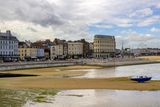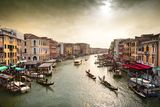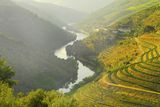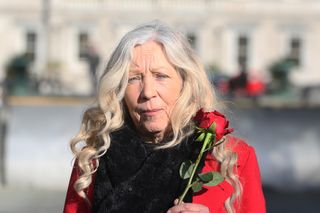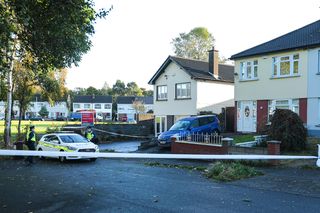Visiting Flanders: 100 years since the Battle of the Somme
WWI tours in Europe
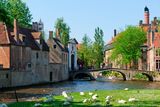
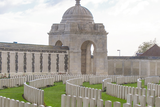
The Battle of the Somme began 100 years ago this week. Muriel Bolger takes an emotional trip to Flanders.
I stand there amid a maze of identical headstones stretching out in every direction. An occasional Star of David breaks the symmetry. The enormity of it is overwhelming. There's a similarity about the war cemeteries that dot the peaceful Flanders landscape, yet each one of the headstones represents a single life - that of a father, a son, a lover, a brother, an uncle, perhaps even all of these.
Everyone thought World War I would be over by Christmas 1914. It wasn't. The Battle of the Somme began on July 1, 1916. By the time it had finished, on November 18, the toll was 420,000 British Army casualties, 200,000 French and 500,000 Germans. By the end of the year, Allied Forces had barely advanced along a 30-mile strip. 88,000 men were lost for every mile they had gained.
Today, it's not the crows that follow the ploughs in these rolling bucolic settings, but people with metal detectors. There are boxes along the county roads where farmers place the unexploded munitions and shrapnel they habitually uncover.
I'm on an escorted tour with Group Tours International (GTI) Ireland, but already it feels deeply personal. The tour brings to life in a very vivid way what it must have been like for the troops who had no choice but to obey the 'Over the top' command when it came.
Over 3,500 Irish soldiers from the 32 counties died serving with the British during these events. They are remembered in the Irish Peace Park in Messines, where an unexpected Irish round tower, constructed with stone from a former Tipperary British army barracks and a workhouse in Westmeath, commands the view. Here I read the bold facts. '10th Irish Division 9,363, killed, wounded and missing; 16th Irish Division 28,398, killed, wounded and missing; 36th Ulster Division 32,186.' And so it goes on.
Bruges, Belgium. Photo: Deposit
I'm astonished at the ages on the headstones, but shocked by John Condon's. At merely 14, this Cork lad is reputed to be the youngest victim of the war. We see Meath poet Lance Corporal Francis Ledwidge's headstone, too. As with many other Irish soldiers in Flanders, he had been in the Irish National Volunteers before joining the allies at the front.
'And now I'm drinking wine in France / The helpless child of circumstance. / To-morrow will be loud with war, / How will I be accounted for?'
Demoted and court-martialed for being drunk in uniform and overstaying his home leave, Ledwidge was reinstated and returned to the Western Front, only to be killed by an exploding shell in 1917.
In Ypres, traffic stops every evening while the Last Post echoes out hauntingly from beneath the Menin Gate, bugled by members of the local fire service. This tradition started in 1927 and, apart from a period during German occupancy in WWII, has continued without a break. Every surface of the arch is inscribed with names of fallen soldiers. The Flanders Fields Museum (inflandersfields.be/en) here is the perfect place to start a tour of the battlefields. It provides a rich overview of events and can help you trace family members who may have been involved.
To get a sense of what the life of a Tommy (and yes, they called the Irish guys Irish Tommies) was like, don't miss the Memorial Museum at Passchendaele (passchendaele.be/en).
Here, I venture six metres deep below ground into the warren of passageways that made up a British bunker. Such burrows were the nerve centres of the front-line defence. English and Welsh coal miners, specialists in tunnelling, were used to construct them. The cells were well thought out, although I'd hate to have been incarcerated in one of them, with shells exploding above. They had sleeping facilities, a rest room for quiet and a row of anything but private privies.
Ypres
I could have spent a whole day dawdling in this museum - a morning was not enough to study the photos, the letters, postcards, posters and exhibits. Outside there was still a network of trenches to experience. Standing in these gave some idea of how exposed these men were, not only to the elements, but to the enemy too.
A visit to the German cemetery at Fricourt seemed the right thing to do. Their losses were also horrendous. Only a few weeks before our visit, the remains of 20 soldiers had been interred there. Such is the tragedy of the Great War that remains are still being found in this part of Europe a century later.
The Flanders experience is overwhelming, rewarding and very moving. It's a different type of pilgrimage. It crosses and embraces all creeds and those with none. No matter whose enemy or foe these soldiers were, they all had family and friends who were left behind. As poet Laurence Binyon writes in The Fallen:
'They shall grow not old, as we that are left grow old: / Age shall not weary them, nor the years condemn. / At the going down of the sun and in the morning / We will remember them. / And 100 years since the Somme, Flanders does this with honour and dignity.'
Get there:
GTI (01 843-4734; gti-ireland.com) are specialists in WWI Flanders and the Somme tours. Four-day tours including a guide cost from €667pp with flights from Dublin. Available dates include September 6-9 & 19-22 in 2016, and May 12-15 next year. A Cork to Amsterdam trip is scheduled from October 15-18 this year.
What to pack
Mosquito repellent for evening time, sturdy shoes, a hat and warm clothes. When the wind blows here it's cold - really cold. Be sure to bring every detail you have if you're hoping to trace the grave of a lost relative. More info at visitflanders.com and flandersfields1418.com.
3 must-dos...
A good guide
WW1 museum
You don’t need to be an expert on WWI history to get the most out of a battlefield tour, and certainly not if you have as passionate and inspiring a guide as we did. Irishman Dermot Curran came with our tour, and he kept us spellbound by imparting boundless knowledge in bite-size portions.
Hidden Treasures
Half Moon Brewery in Bruges
The Flemish love their beer and food, and you can indulge in both at the family-run Half Moon Brewery in Bruges (halvemaan.be), famous for its ales, museum and food. In central Ypres the hot spot is In ‘t Klein Stadhuis (inhetkleinstadhuis.be). It specialises in robust dishes with Belgian beer.
Sweet treats
Chocolate shops, Flanders
You need a down day after all this history, and we headed to beautiful Bruges, capital of Flanders. It has a canal system worth navigating, as well as Michelangelo’s Madonna and Child in the Church of Our Lady. And he chocolate shops — oh, the chocolate shops! bezoekers.brugge.be/en.
Join the Irish Independent WhatsApp channel
Stay up to date with all the latest news






